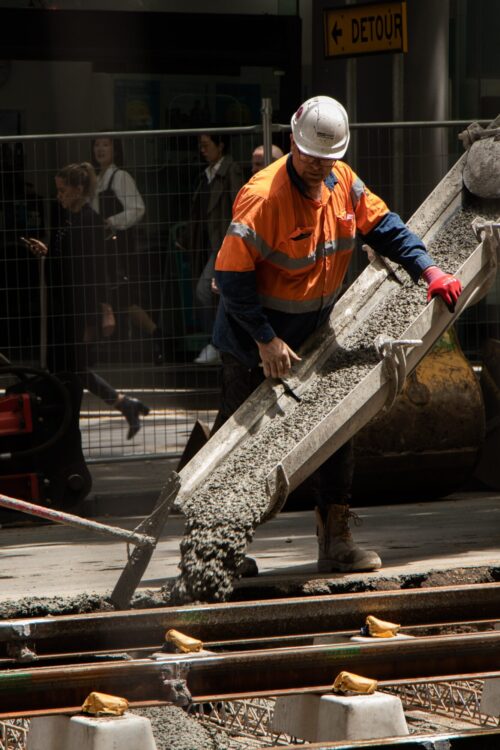Planning your dream office fitout is an extremely exciting process. When you do begin to plan out your vision, it’s full of exhilaration, cutting edge design and innovative ideas.
But one often overlooked aspect of planning your office fitout is your essential obligations. One of which is to appoint a principal contractor responsible for ensuring the health and safety of people on the construction site.
You could face penalties if you fail to comply with your obligations under the Victorian Occupational Health and Safety (OHS) legislation. Therefore, you must understand your obligations and appoint a qualified and experienced principal contractor to oversee your construction project.
This blog post will explore why it’s essential to have a principal contractor for your next fitout.
What is a Principal Contractor?
A principal contractor is an entity that is responsible for the management of construction of any building site. If you are undertaking a building project in Victoria, you may need to nominate a principal contractor. The owner of a property assigns the principal contractor to:
- maintain management or control of the workplace and
- carry out the responsibilities of a principal contractor under OHS law.
This role was developed by the Occupational Health and Safety Act to guarantee that specific construction projects have a person liable for the construction sites work, safety and health standards.
On a construction project, only one principal contractor may be appointed at any given time.
Typically, the head builder is the principal contractor for building projects with numerous crafts operating at different periods. They would then be responsible for the health and safety of all other trades and workers on the site, including but not limited to:
- Electricians
- Tilers
- Painters
- Plumbers
- Carpenters
Duties and Responsibilities of a Principal Contractor

Principal contractors have a wide range of duties and responsibilities on any building site ranging from ensuring that construction is planned, managed, and monitored, to maintaining health and safety standards across the work site.
Responsibilities include the following:
- Planning, managing, monitoring and coordinating the entire construction phase.
- Assessing and mitigating risks to health and safety for those affected by the work while developing and managing the standard precautions.
- Maintain contact with the client and trades throughout this project to ensure every risk is handled correctly.
- Ensure consistent arrangements for managing health and safety during the construction phase.
- Consult and communicate with construction workers regarding their safety and health.
- Prepare a detailed construction phase plan before the construction phase. This is reviewed and amended regularly to ensure it is suitable for its purpose.
- Ensure adequate signage, personal protective equipment and access
- Appoint trades who have the necessary skills, knowledge, or experience and ability to complete their job safely and securely without danger to health.
- Ensure that employees receive site-specific instruction and any other training or information they need.
- Communicate with the architect and designer in charge to share any details relating to the management, planning control, and construction phase monitoring.
Skills, Knowledge and Experience
As we can see from the duties and responsibilities a principal contractor holds, the skills and knowledge they require is quite diverse. A principal contractor must have the necessary skills, knowledge, experience and organisational capabilities to carry out their appointed task.
The required skills and knowledge can depend on the scope of the project, the structure, and the nature of the potential health and safety risks. At a minimum, a principal contractor should ensure they provide the following:
- Training and assessments e.g., White Card, Asbestos training
- OHS Certifications, Site-specific Inductions, Permits
- Safe Work Procedures, Safe Work Method Statements, Job Safety Analysis,
When do you need a Principal Contractor?

Every construction project requires a principal contractor. According to the Work Health & Safety regulation in Victoria, a “construction project” is defined as a project that involves “construction work” and costs more than $250,000.
One important detail to note, is that if no principal contractor is appointed on the project, you will by default be considered the principal contractor.
A principal contractor should be appointed as soon as possible after the construction contract is signed and before the construction phase begins. This will ensure that the health and safety of everyone involved in the project are managed from start to finish.
Construction work includes all aspects of the construction or structure development of a building, such as:
- Alteration
- Building
- Conversion
- Demolition
- Fitting out
- Recommissioning
- Refurbishment
- Renovation
- Recommissioning
How to Appoint a Principal Contractor
Section 293 of the Work Health Safety Regulation states that a construction project may only have one principal contractor at any given time. The person conducting a business or undertaking (PCBU) who commissions the construction project is the project’s principal contractor except if the PCBU:
- Appoints another person engaged in a business or undertaking as to the project’s principal contractor; and
- Authorises the principal contractor to control or manage the employment and discharge its obligations.
If you own commercial property where construction is taking place and engage someone to manage the workplace, that person will be considered the principal contractor.
It’s crucial that you appoint a principal contractor properly. Otherwise, you would be termed the default principal contractor. This will establish a set of responsibilities to manage OHS vulnerabilities throughout the construction process.
The possibility of being penalised legally for failing to meet these obligations will arise. Therefore, it is important to include specific and clear provisions in your agreement with the person you wish to appoint as the principal contractor.
Appointing a Principal Contractor in Victoria

According to the Victorian Regulations, the building site owner is immediately considered the principal contractor. The owner may choose another person as the principal contractor.
But the owner must authorise that person to manage or control the workplace to the extent required to carry out the obligations of the principal contractor. It is unnecessary for an owner to choose a primary contractor in writing, although it is recommended.
There is no restriction on who can be appointed as a principal contractor. In the case of domestic construction work, if an owner hires someone to manage or oversee the workplace, that person is immediately assumed to be the principal contractor.
Your obligations
This is a relevant difference between Victorian OHS law and the rest of Australia’s work health and safety laws. As an owner commissioning construction work in Victoria, you will not have many obligations.
However, to the degree that you have control or management of the workplace, you must ensure that the workplace and the methods of entering and exiting it are:
- Safe, and;
- Pose no health risks.
This implies that if you engage a builder to conduct your office fitout, the builder does not have total authority or management of the workplace. You must still comply with this obligation – failure to comply with the applicable obligations can result in penalties.
Final Thoughts
Hopefully we’ve given you a better understanding of why you need a principal contractor for your next fitout. Be sure to gather quotes from a list of your potential contractors and weigh the pros and cons before making a final decision.
Remember that being aware of your needs is the first step towards securing a suitable fitout for your business. Agero runs workplace strategy workshops to help align your business goals to your workplace environment. Or use our space calculator to determine how much space you need.
As experts at the fitout process, let us minimalise risk and make your complex fitouts simple. We’ll take the stress out of realising your dream office, managing trades, and ensuring a seamless delivery. While you get to focus on your business and enjoying your fitout.
Have questions about office fitout or principal contractors? Get in touch today.


